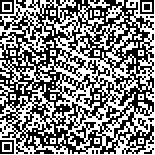| This article has been:Browse 1197Times Download 1086Times |

scan it! |
|
|
| DOI:10.13522/j.cnki.ggps.2020565 |
|
| The Effects of Criteria Used in Irrigation Control on Growth and Water Consumption of Winter Wheat |
|
LEI Yuan, LIU Zhandong, ZHANG Weiqiang, HUANG Chao, DUAN Aiwang, LOU He, LIU Zugui
|
|
1. Farmland Irrigation Research Institute, Chinese Academy of Agricultural Science/Ministry of Agriculture Key Laboratory of Crop Water Requirement and Regulation, Xinxiang 453002, China; 2. Graduate School of Chinese Academy of Agricultural Sciences,Beijing 100081, China; 3. Henan Institute of Science and Technology for Development, Zhengzhou 450003, China;4. Henan Weisheng Electric Appliance Co. LTD, Xinxiang 450001, China
|
| Abstract: |
| 【Background】Improving crop yield while in the meantime saving water use in irrigation is the double whammy to alleviate the conflict between dwindling water resources and sustaining agricultural production in northern China. How to improve irrigation water use efficiency by optimizing irrigation control criteria has been intensively studied, but most of them took the low limit of soil water content in a fixed wetting zone as the irrigation criterion, overlooking that root zone elongates as plant grows.【Objective】 The purpose of this paper is to address this equation. We investigated how wetting depth and soil moisture in it can be used as a combined criterion to manage winter wheat irrigation, aimed to provide an improved method for agriculture water management and automatic irrigation of winter wheat in northern China.【Method】The experiment was conducted at a winter wheat field by controlling soil water content at 40% (L), 50% (M) and 60% (H) of the field capacity, within the soil layer in the depth of 60 cm, 80 cm and 100 cm respectively. Therefore, there were nine treatments which were randomly arranged in the field. During the experiment, we measured water consumption of the winter wheat and change in its biomass in each treatment.【Result】 Different combinations of wetting depth and critical water content led to a change in both irrigation amount and irrigation frequency. Increasing the wetting depth or reducing the critical soil moisture hindered crop growth and development. When the wetting depth was set between 60 cm and 100 cm and the critical water content was in 40%~60% of the field capacity, dry matter accumulation before and after the flowering stage increased first followed by a decline, as time elapsed. Increasing the critical soil water content led to an increase in yield and water consumption. Water consumption was the highest when the wetting depth was 80 cm, and the least when the wetting depth was 60 cm. The maximum water use efficiency was 19.96 kg/(hm2?mm), achieved when critical soil moisture in soil depth of 60 cm was 60% of the field capacity, which was 21.0% up compared to the least when the critical water content in the 0~100 cm of soil was 40% of the field capacity.【Conclusion】Keeping the soil moisture in 0~60 cm of soil not dropping below 60% of the field capacity is most efficient and optimal for improving irrigation water use efficiency of winter wheat in northern China. |
| Key words: winter wheat; dry matter; planned wetting depth; lower limit of soil water content control; yield |
|
|